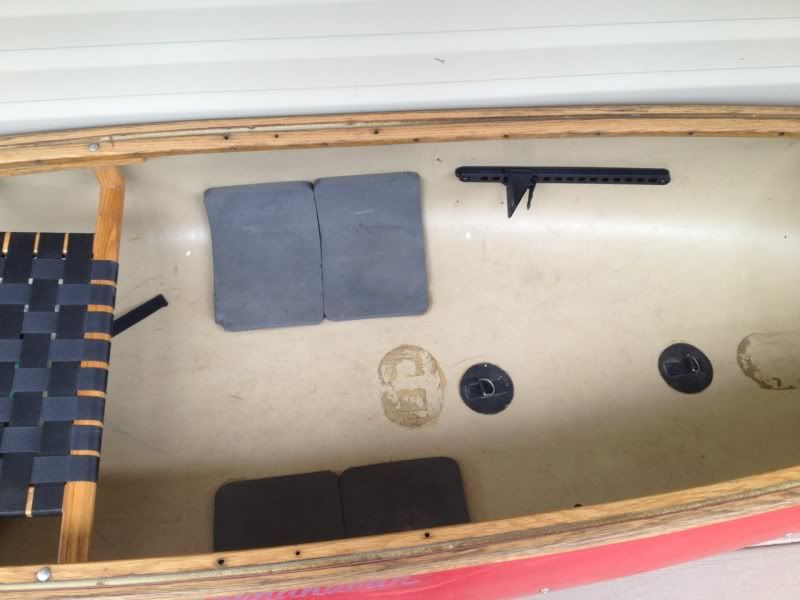Nearly all of my canoes have a foot brace bar (the Wenonah slider) and I have had zero problems with the holes drilled to accommodate that hardware. It may actually help that the bar in that Wenonah slider is tensioned in place with little twist knobs instead of the older-style and more rigid wing nuts through drilled holes – I ran a broken mill dam in my Mohawk Odyssey and slammed the bow into a rock at the bottom hard enough to throw me forward off the seat; instead of tearing the foot brace bar through the RX the bar slid forward. (kneeling suggestions unnecessary)
Thinking about it, I have never seen cold cracks emanating from a pop rivet in RX
Cold cracks sometimes occur in wood trimmed Royalex boats but this is attributed to differential expansion of the Royalex and wood. I read somewhere someone claiming that drilling holes through Royalex was a bad idea since it exposed the foam core to water which caused accelerated degradation, but I have drilled hundreds of holes through Royalex canoes below the gunwales for airbag lacing and not observed any evidence of this.
Pete, nearly all of my RX hulls are drilled for float bag lacing or DIY covers and I have not (knock wood) had any cold crack issues. Of course I no longer have any RX canoes with wood gunwales.
That said I have seen two old vinyl gunwaled RX hull in which there were cold cracks obviously germinating from float bag lacing holes, even those spaced between the gunwale pop rivets. Unlike the typical cold cracks on wood/Rx hulls those boats were cracked at many of the float bag lacing holes along the sheerline, not just near the stems.
Both were Maryland boats, so not exactly the bitterest of winter temps. One was a $100 fixer-upper, an ancient MR Explorer. I went to look only because it was minutes from home. That boat had cracked along the sheerline on both sides at nearly every float bag lacing hole, even those center spaced between the gunwale pop rivets.
The other was a friend’s RX/vinyl Old Town. He stored his boats outside on cunningly simplistic lean-to racks, essentially a set of 2x4’s with pegs, leaned / against a wall. That canoe similarly cold cracked at the lacing bag holes, but only along one gunwale – the side that habitually came off the car on onto the racks downhill.
My personal (and unsubstantiated) belief if that cold cracks develop in the rare RX hull that had some construction miscue, in the forming of the Royalex into a hull shape (oven too hot, or not hot enough), or perhaps in the manufacture of the RX sheet itself.
With the seemingly soon to be absence of new Royalex hulls it becomes a moot point mystery.


